mark mclaughlin
FOUR-LETTER WORD BEGINNING WITH `F'
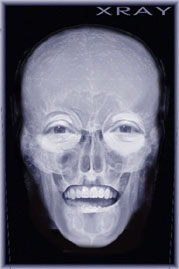
Mark McLaughlin's fiction, nonfiction and poetry have appeared in hundreds of magazines, newspapers, websites, and anthologies, including Galaxy, Writer's Digest, Black Gate, Cemetery Dance, Midnight Premiere, Dark Arts, In Laymon's Terms, and two volumes each of The Best of the Rest, The Best of HorrorFind, and The Year's Best Horror Stories (DAW Books).
Collections of his fiction include Motivational Shrieker, Slime After Slime, and Pickman's Motel from Delirium Books; At The Foothills of Frenzy (with co-authors Shane Ryan Staley and Brian Knight) from Solitude Publications; and Twisted Tales For Sick Puppies from Skullvines Press. GravesideTales.com is the home of his blog, Time Machine of Terror! Also, he is the co-author, with Rain Graves and David Niall Wilson, of The Gossamer Eye, which won a Bram Stoker Award for Superior Achievement in Poetry.
With collaborator Michael McCarty, he has written Monster Behind the Wheel (Delirium Books/Corrosion Press), Attack of the Two-Headed Poetry Monster (Skullvines Press), All Things Dark and Hideous (Rainfall Books, England), and Professor LaGungo's Delirious Download of Digital Deviltry and Doom (Darkside Digital).
To find out more about McLaughlin's work, visit www.myspace.com/monsterbook, www.myspace.com/phantasmapedia, www.skullvines.com, and www.Horror-Mall.com (enter McLaughlin into the Mall's search engine).
Paging Dr. Pretorius:
Or, A Feverish Fear of Physicians
Welcome once again to my phobia forum, where Fear (the four-letter word mentioned in the column's name) in the cinema of the macabre is subjected to an online autopsy.
Last time around, I talked about horror movies involving primates -- a topic that I'm absolutely APE about -- and I shall return to that topic in the near future, since I feel I'd only scratched the surface last time. But in the meantime, I have another topic scritching and scratching inside my brain, longing to be brought to your attention.
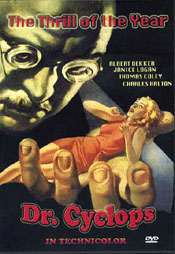
Why are people afraid to go to the doctor? It doesn't make sense, really. Doctors are supposed to be on our side. They examine us, determine what health problems are present or forthcoming, and prescribe preventive or curative medicines and/or therapies.
Unfortunately, doctors are often the bearers of bad news. They tell people they have high blood pressure. Diabetes. Cancer. Leprosy. They inform people that they need to do things they might not care to do, like diet and exercise. They are the ones who have to tell family members that a loved one is dying.
Interacting with doctors means that money will need to be spent. The costs of pharmaceuticals, equipment, supplies and physician fees can add up to terrifying amounts -- especially if the patient doesn't have medical insurance.
Plus, doctors have a huge responsibility to be 100 percent accurate. Health care is a field where a single miscalculation or oversight can cost someone their life.
And of course, doctors poke us with needles in their offices and slice us with scalpels in operating rooms. It's part of their job -- a reality that can't be avoided. That factor alone is enough to make even the bravest soul a little queasy.
When one considers the many and varied reasons why people are afraid of doctors, it's no wonder that horror movies are filled with fearsome physicians.
It's easy to think of many movies featuring mad doctors. The Universal franchise of Frankenstein movies was filled with generations of them. In the first one, Frankenstein (1931), the doctor may be a bit mad, but he means well. He truly wants to learn the eternal secrets of life and death for the good of humanity.
While Dr. Frankenstein isn't evil per se, he has no problem whatsoever robbing graves -- a practice which most decent (or even semi-decent) folks would find horrendous and appalling. In the various sequels, the doctor's descendants and followers, like the doctor himself, allow their scientific curiosity to become an overriding factor in their interactions with others.
In Bride of Frankenstein (1935), Dr. Frankenstein tries to give up monster-making, but he's lured back into the game by his waspish old mentor, Dr. Pretorius. Dr. Pretorius is a man with three main weaknesses: namely, gin, cigars, and creating tiny, comical homunculi. But now he wants to work on a bigger scale....
Dr. Pretorius' influence on his former student is seductive and corrupting. When Dr. F finally comes to his senses, Dr. P has to resort to kidnapping and extortion to get what he wants, which is to create a mate for Dr. F's monster. Dr. P and the monster's mate perish in the final moments, but the monster lives on and onÖ in sequel after sequel after remake after remake.
There are soooo many horror movies featuring mad doctors, I could easily write a dozen columns about them. Here are some highlights from over the years:
Dr. Jekyll and Mr. Hyde (1920): John Barrymore plays both roles with gusto -- this early silent-film version of the tale is better than most of the later versions. Barrymore's Hyde is a spidery, long-fingered nightmare in human form.
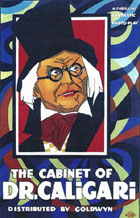
The Cabinet of Dr. Caligari (1920): In this haunting tale-within-a-tale, a corpulent sideshow medico displays a murderous sleepwalker in a surreal village of long shadows.
Dr. Cyclops (1940): A reclusive doctor in a remote jungle shrinks some visitors down to doll-size with radioactivity and then tries to kill them all when he realizes that they're growing and will eventually return to normal size.
Shock (1946): Vincent Price plays a psychiatrist who has to treat a woman who has fallen into a stunned state of shock -- because she saw the psychiatrist kill his wife!
The Mesa of Lost Women (1953): Dr. Aranya develops a spider-hormone serum that turns men into ghastly dwarves and women into luscious, predatory sexpots. Lots of crazy stuff happening on that one mesa!
Tarantula (1955): Leo G. Carroll plays a doctor who brews up a non-organic radioactive nutrient (doesn't sound very nourishing to me!) that gives men acromegaly and causes little creatures -- like say, oh I don't know, tarantulas, maybe -- to grow so big, they need to be napalmed into submission.
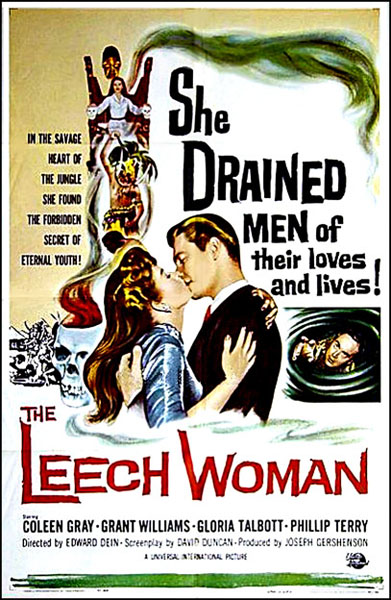
The Leech Woman (1959): A cruel, amoral doctor interested in longevity turns his aging wife into a young lovely who needs a steady stream of male pineal gland juice to turn back her odometer. Unfortunately, the process of extracting the juice kills off the unsuspecting donors -- the first one being her husband.
The Alligator People (1959): A doctor's bizarre experiments with radiation turn grown men into reptilian humanoids. When he turns up the radiation, they grow gator snouts!
Hands of A Stranger (1962): This is one of several movies about wicked doctors grafting the hands of killers onto concert pianists who'd lost their hands in accidents. Apparently concert pianists are rather clumsy fellows who are always losing their hands. Frightfully careless of them!

Jesse James Meets Frankensteinís Daughter (1966): "Roaring Guns Against Raging Monster!" That's what posters of the time had to say about this Old-West-Meets-Gothic-Gore schlock masterpiece. Frankenstein's daughter moves to the American frontier to continue her father's loathsome experiments.
Lady Frankenstein (1972): Here's another tale of Frankenstein's daughter. In this one, the doctor's lovely offspring is also a physician who likes to dabble with life and death and miscellaneous transplants. She makes her own perfect lover by sticking the intelligent brain of her father's middle-aged assistant into the hunky body of an intellectually-challenged handyman.
Dr. Tarrís Torture Dungeon (1972): This kooky, colorful mess is a lavish retelling of a classic Poe tale of inmates taking over an asylum.
Donít Look In the Basement (1973): Here's another case of the inmates taking over the asylum. That must have been the thing to do, back in the early Seventies.
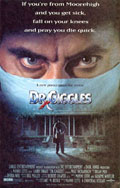
Dr. Giggles (1992): A mad physician's equally mad son, who likes to play doctor in the worst possible way, returns to his hometown to kill off folks with a gruesome array of medical implements.
Dr. Jekyll and Ms. Hyde (1995): This is certainly the least frightening version of the Jekyll & Hyde tale -- probably because it's a sexy comedy. In this one, the good, male doctor turns into an evil, beautiful female.
Movie villains Dr. Phibes (Vincent Price's best role) and Dr. Goldfoot (Vincent Price's worst role) are not listed above because they never actually practice medicine or engage in medical research. Dracula's nemesis Dr. Van Helsing isn't listed because he's a GOOD doctor.
Don't get me wrong: I think doctors are great, no bones about it. They are wonderful professionals who save lives and do humanity worlds of good. We need them every step of the way throughout our lives, from birth all the way to the deathbed. So please, try very hard not to be afraid of doctors. They are our friends and protectors.
Still, it's hard not to flinch when one draws near with a shiny hypodermic needle...
END















